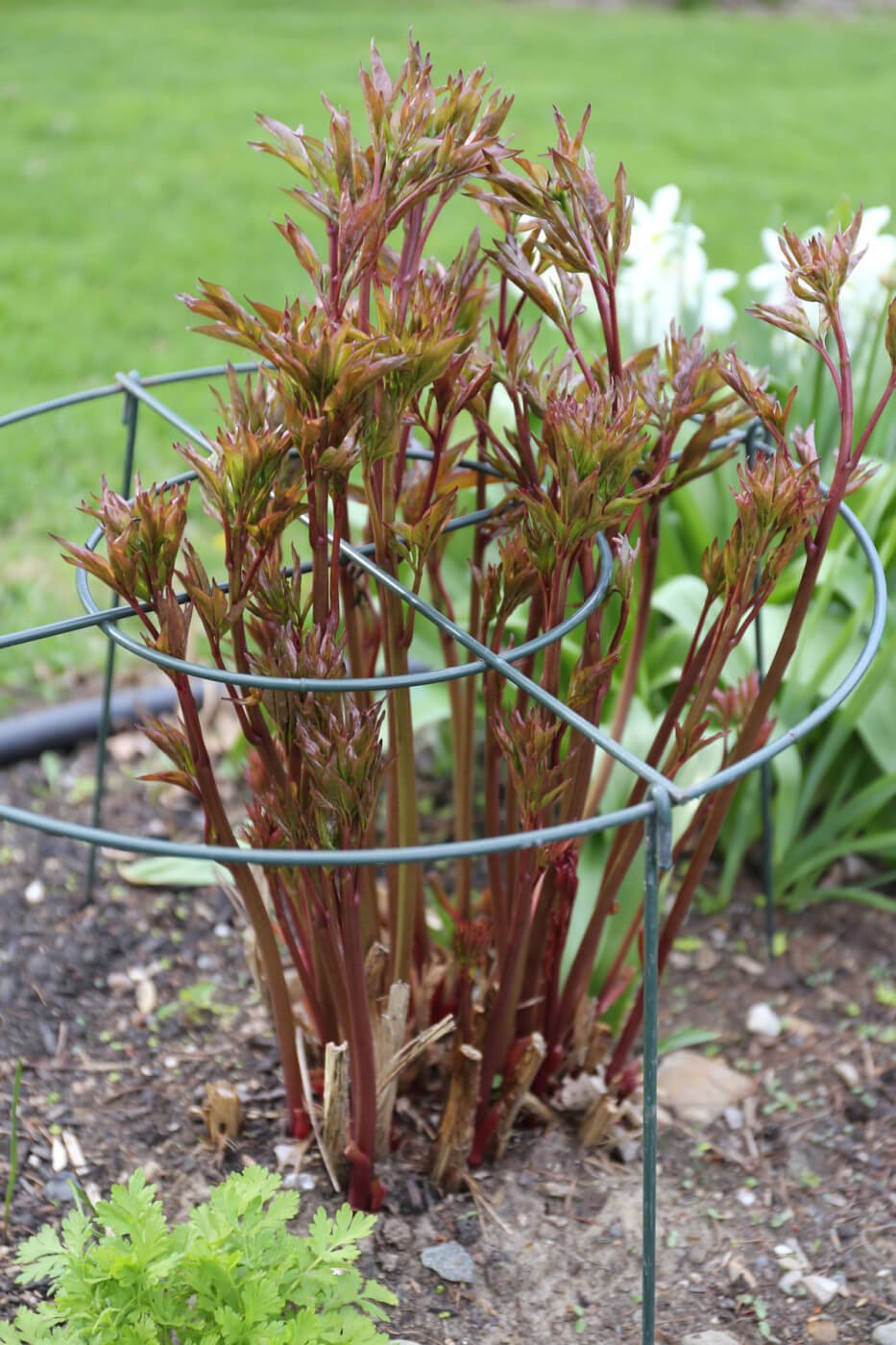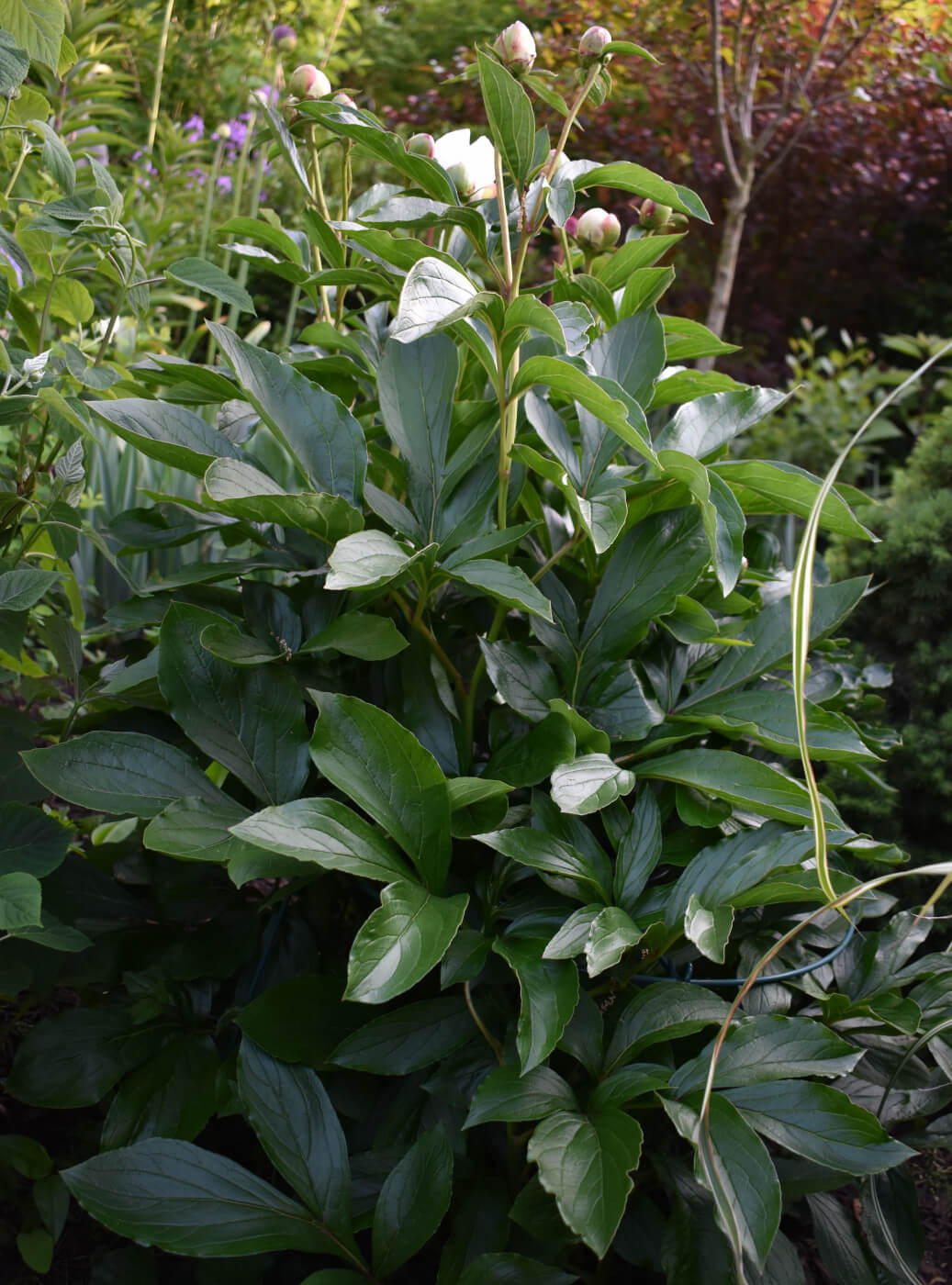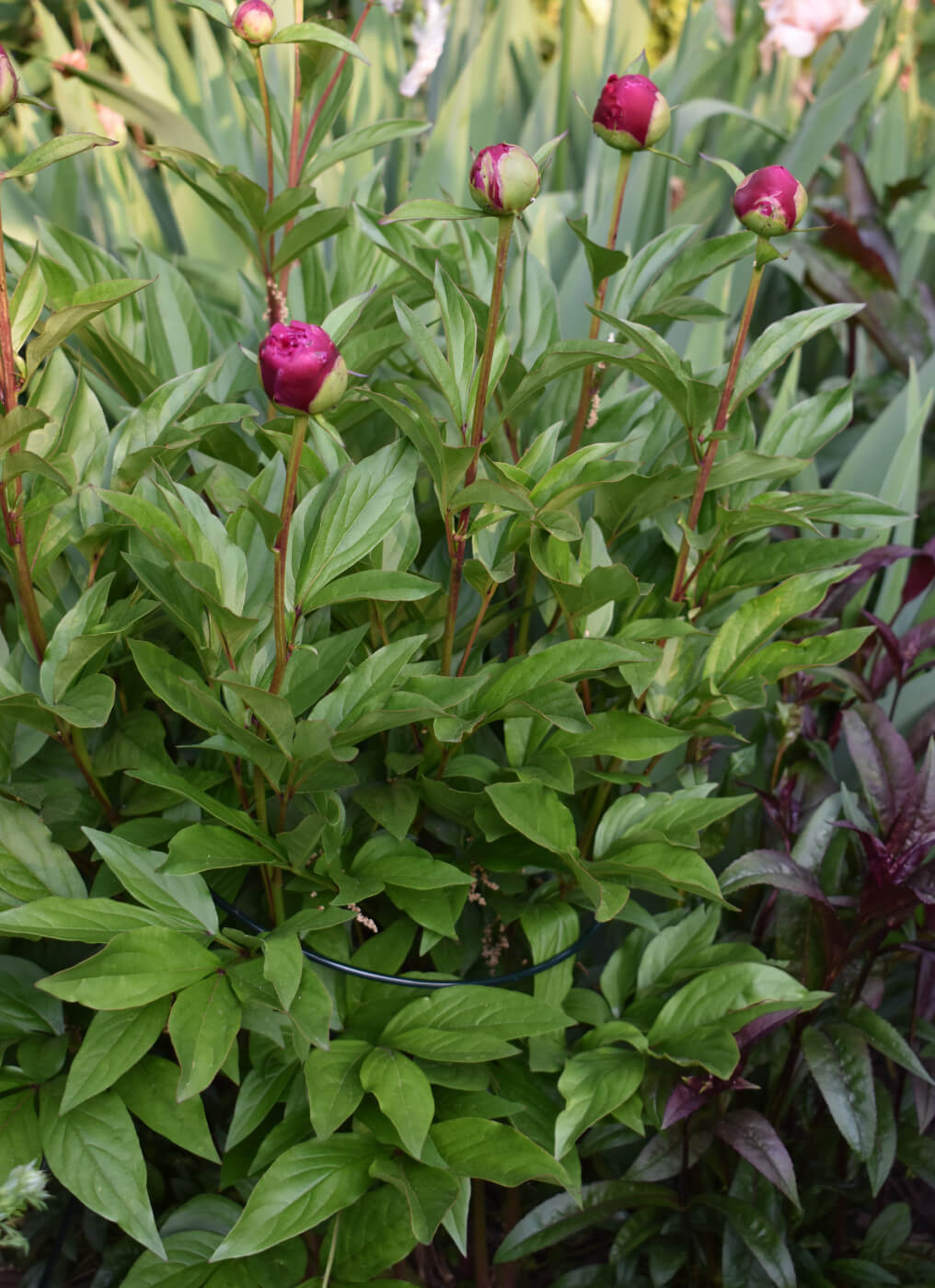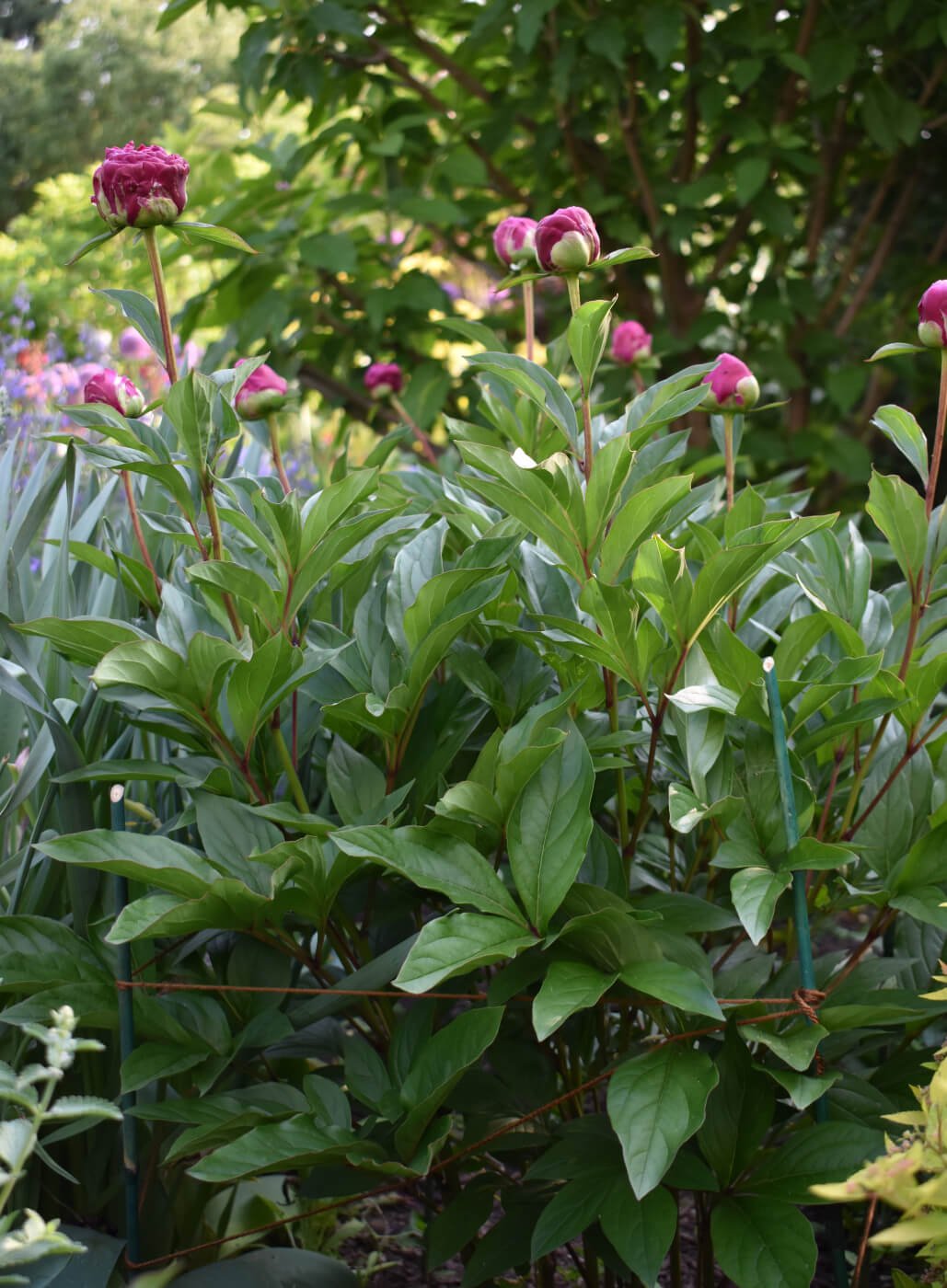How to Keep Your Peonies From Flopping
Herbaceous peonies are easy to grow and easy to love. Their sumptuous flowers are a highlight of the early summer garden. The plants can bloom for generations, producing more and more flowers each year. While there are many things to love about peonies, they do have one downside: flopping.

While not all herbaceous peonies flop, most double and semi-double do. In a rainstorm, the big, multi-petaled flowers act like sponges and the wetter they get, the closer to the ground they bend. Watching your peonies put their faces in the mud can be almost too much for a gardener to bear. Fortunately, there are some low-tech support systems that can keep peony flowers upright no matter what nature throws at them.
Peony Cages
Peony cages feature a sturdy metal grid on four support stakes. They are designed to be positioned over the plant in early spring so the stems can grow up through the grid. Getting them on early (or leaving them in place year-round) is important because they can't be added once the plant has leafed out.

Cages are the best option for peonies in herbaceous borders. They help the stems stay separated so when the plants are in bloom, you get a beautiful, upright peony bouquet. Though cages are the most expensive support option, they can last for decades and are well worth the investment. For young plants, a folding metal tomato cage can be shortened to create a low-cost alternative.

Peony Rings
Peony rings are like cages but without a wire grid. They usually come in two half circles that link together and surround the plant. These supports can be put in place in the spring, or after your peony plant has fully leafed out and budded up. Take care to purchase rings that are at least 24 inches tall. Shorter rings provide some support, but rain-soaked flowers can break where the stem touches the ring. Peony rings are generally less expensive than cages and are quick to install. They offer slightly less support than a cage but are still a worthwhile investment.

Corralling
Corralling is the most cost-effective way to support peonies. Start by pushing 4 to 6 strong stakes into the ground around the plant's perimeter. The bigger the peony, the more support it will need. If your peony is more than 4 years old, consider using metal stakes rather than wood ones.
Once the stakes are in position, use twine to encircle the plant. Twist the twine around each stake, and pull it taut to support the weight of the stems. Ring the plant two or even three times at different heights for best support.

Netting
If you have multiple peonies planted in a row, Hortonova netting can be a great solution. It's a poly netting with 5" square openings. Hortonova needs to be set up early in the season, before the plants reach 12" tall. Start by placing strong metal or wood stakes around the perimeter of the peony row every 4-8 feet. Then place the netting over the stakes, suspending it horizontally over the peony plants, 18-20 inches above the ground. Make sure the netting is pulled tight. Loose netting is useless. As the plants grow up through the netting, they will be supported by the gentle yet strong plastic squares.

Shop our selection of peonies HERE.
Watch our peony videos HERE.
Read about using peonies as cut flowers HERE.
